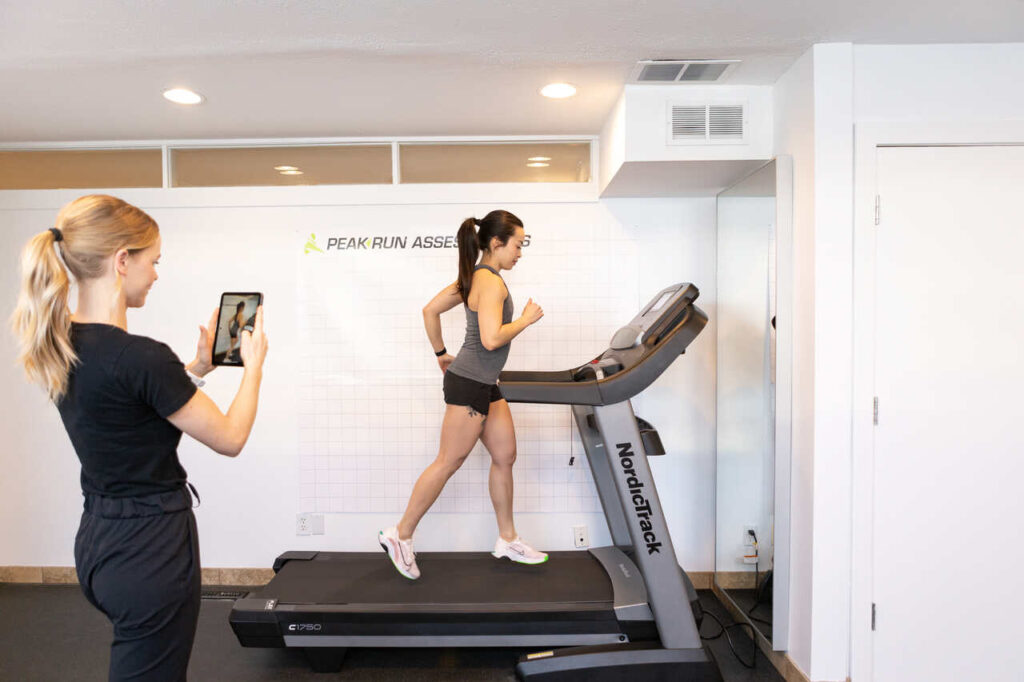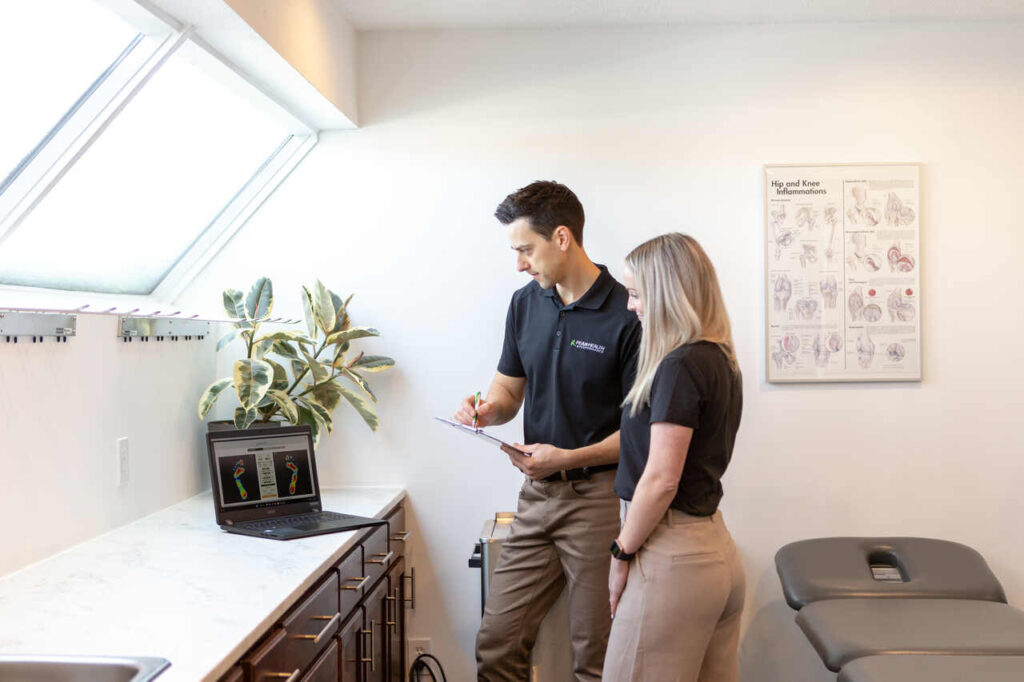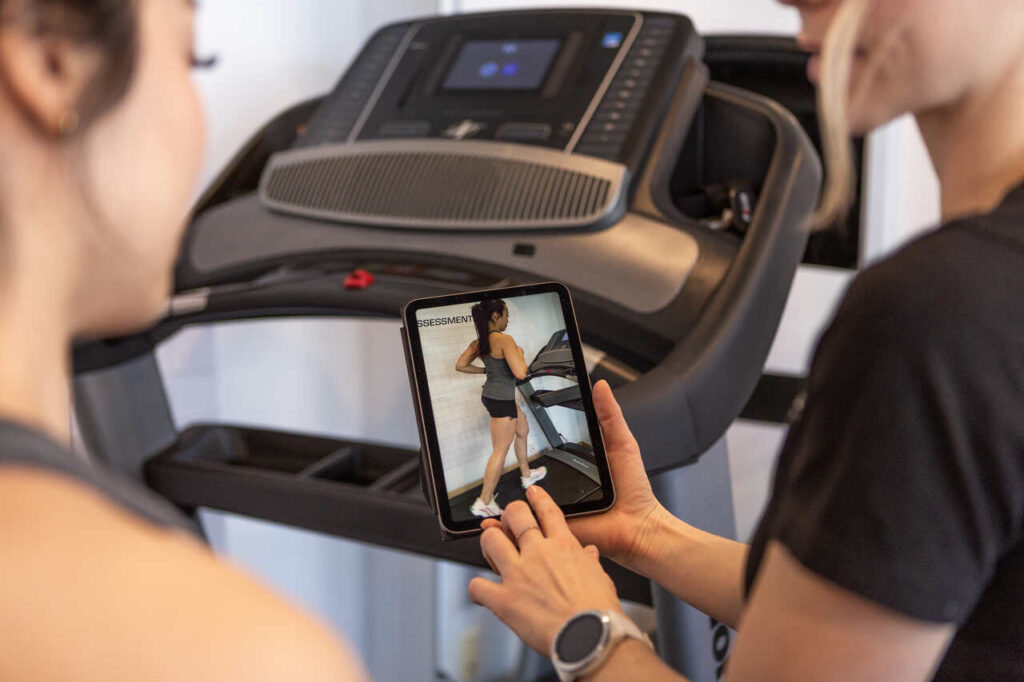Written by Dr. Claire Wells, Chiropractor
Maybe you’re an experienced runner who’s been dealing with the same recurring “niggle” during long runs for years. Or maybe you’re thinking about doing your first 10k but you’re not sure if your body is ready to take on the training. Or maybe you feel great when running, but you want to see if there is anything you could improve on! A gait analysis, or a running assessment, is often a great place to start when you are stuck on an injury that keeps resurfacing, you’ve hit a plateau with your running, or you are new to the sport and you want to get off on the right foot.
Gait Analysis 101
A running assessment is not simply watching you run! It involves a thorough assessment of your entire body, in addition to a gait analysis performed via video analysis. This is because as practitioners, we know that running is a full-body sport and we can’t ignore deficits or findings in other areas of the body when we are looking at a runner. The basic breakdown of a gait analysis involves 2 primary sections:
1. Screen for Deficits in Range of Motion, Strength, and Stability.
Based on the mechanics and demands of the sport, there are certain requirements of the body. If we don’t meet these requirements, we are more likely to create adaptations that could lead to injury, or make you less efficient when running. You need to have a solid foundation before you add speed and movement into the mix! From the amount of movement in your big toe to the amount of rib expansion you have, we are looking at it all. There is a misconception that you need to be on a track to pick out running abnormalities when really having a patient stand on one leg can tell us a lot about what we may see when we add the running movement into the picture.
2. Screen for Deficits in the Essential Qualities for Running.
When you add speed and movement to the basics, this is when we are able to see how you are able to piece it together on the pavement. Gait analysis with slow-motion video allows us to identify what you’re doing well, and what could be better in your running technique.
We can identify potential injury risk factors, or reasons why you might be experiencing pain as well as break down biomechanical factors and compensations that are snowballing into less than favorable results. Having a proper gait analysis performed by a trained physiotherapist or chiropractor will give you the confidence to know the practitioner is assessing you head to toe, finding anything that may be contributing to your presentation.
Gait Analysis, Running, and Tapping Into Your FULL Potential
Your chiro or physio can also triage your needs based on your goals and obstacles. We are excellent at diagnoses, manual therapy and exercise prescription, but you may have more specific needs that would be more effectively addressed by different professionals or additional resources. We can help point you in the right direction depending on what we find during your gait analysis. For example, you may need or want:
- A strength and conditioning specialist
- Run Coaching
- A dietician or nutritionist
- Sport psychology
- Lab testing with an exercise physiologist in Calgary
- Massage therapy
- A visit to your medical doctor for blood work
- Diagnostic imaging
- Resources such as book recommendations
Who Should Get a Gait Analysis?
Running assessments are for anyone who runs! Whether you are brand new to running, are wanting to get into new distances for racing, or have been running at a high level for most of your life, you will get something out of it. Here are some examples of when a running assessment might be especially valuable:
-
You Are New to Running or Want To Get Into It.
This is sometimes the best time for a gait analysis, as we can stop bad habits before they arise, and get you on a tailored strengthening program to best support running injury prevention.
-
You Have a History of Running Injuries or Any Overuse Injury.
The biggest risk factor for an injury is a prior injury. If our brain asks our body to do a task, it’s going to find a way to do it. When we have an injury or pain, our body will adapt so it can still achieve the movement goal while reducing the threat to the compromised area. Often we maintain these adaptations long-term, and this can set us up for new issues. Getting assessed can help to see if you’ve created compensations for your movement deficiencies.
-
You Have a Current Injury That Is Causing You Pain or Preventing You From Running As Often, Far, or Intense As You Want To.
Let’s figure out why! The location of your pain is often NOT the location of the problem. This is especially true when pain has a gradual onset or if you seem to get the same pain that comes and goes repeatedly over a long period of time.
-
You Are Looking To Improve Performance.
Because the things we check in a running assessment are factors that contribute to running economy and tissue health, identifying deficiencies (and of course, then working to improve them!) can positively impact your performance in training and racing.
What Does a Running Assessment Look Like?
This will vary based on the clinic you go to and the practitioner that you see, not to mention the individual being assessed. But the essential components of a running assessment include the following:
1. Mobility and Strength Assessment
- Ranges of motion of the spine, shoulders, and lower extremities
- Strength of the core and lower extremities
- Stability testing of the core and single leg
- Breathings mechanics
- Movement pattern competency
2. Gait Analysis on the Treadmill
- Slow motion and real-time video analysis of your run from multiple angles
- Real-time practitioner-led cueing for trial-and-error type corrections and recommendations based on findings
3. A Summary of Findings
- At the end of your assessment, you will receive a plan of care outlining all of the findings, patterns, and relevant information as we often go over A LOT in these sessions!
- This summary of findings will also include outcome measures to monitor and progress throughout your treatment plan and running journey
4. An Action Plan for the next steps. This might include:
- Recommendations for manual therapy, if you are experiencing pain or lacking range of motion.
- An exercise prescription to resolve any deficits identified in the assessment.
- An individualized warm-up and/or cool-down protocol.
- A timeline for when to follow up for treatment and/or new exercises.
- A referral to an additional service provider, if needed.
Final thoughts
These appointments are also great to just connect with a practitioner who understands your sport and can relate to what you’re doing. It’s helpful to have a professional in your corner who not only shares your enthusiasm for running but also has your back when it comes to supporting your goals.
Our Running Assessment practitioners at Peak have combined experience in track, road running, and trail running, and we can’t wait to help you! Whether you are a novice runner, a long-distance runner, a track athlete, or someone who is curious if you could ever become a ‘runner’, we have someone who is ready to help you. To book your running assessment today, click HERE.


